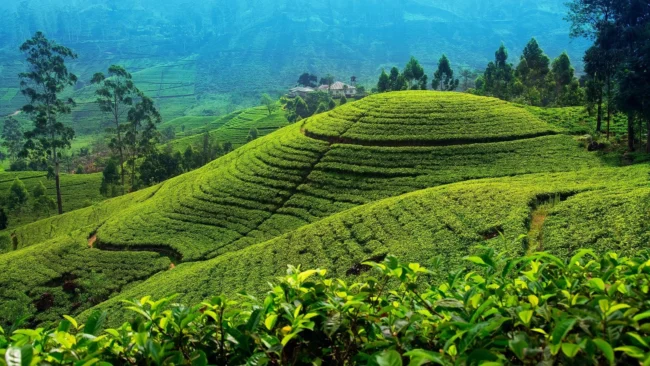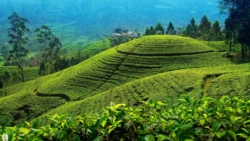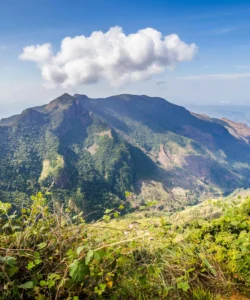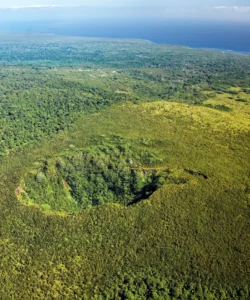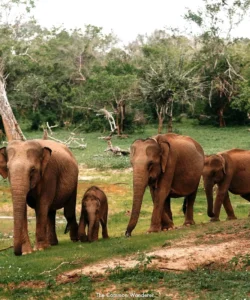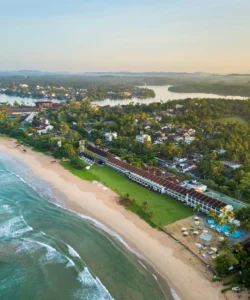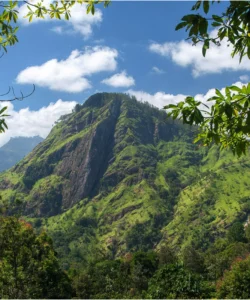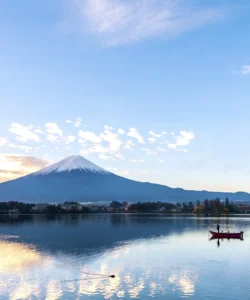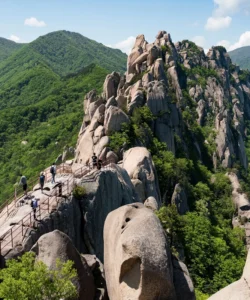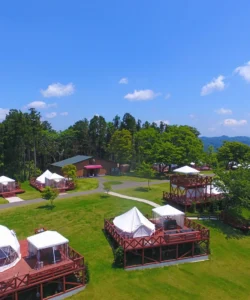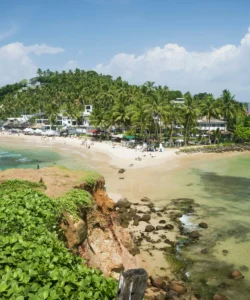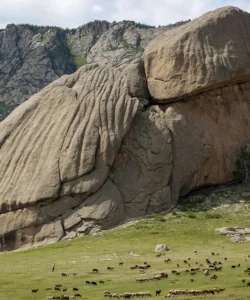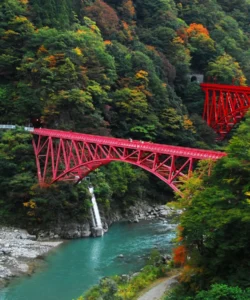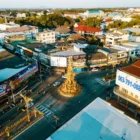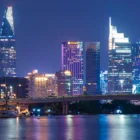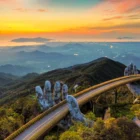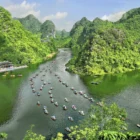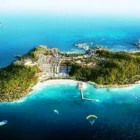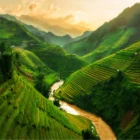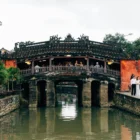Nuwara Eliya (නුවර එළිය) is a charming and picturesque city nestled in the heart of Sri Lanka’s central highlands. Often referred to as “Little England” or “City of Light,” it was developed by the British as a cool-climate hill station during their colonial rule, offering a stark contrast to the tropical heat of the lowlands. Today, it remains famous for its vast, emerald-green tea plantations, colonial-era bungalows, misty landscapes, and crisp, cool climate, making it a popular retreat and a vital center of Sri Lanka’s tea industry.
Name: Nuwara Eliya (නුවර එළිය, meaning “City of Light” or “City on the Plain”). Often pronounced “Nur-e-LI-ya.”
Address: Nuwara Eliya District, Central Province, Sri Lanka.
How to get there:
Reaching Nuwara Eliya typically involves first getting to Sri Lanka (Colombo) and then traveling into the highlands:
- From Colombo (Bandaranaike International Airport – CMB) to Nuwara Eliya:
* Train + Taxi/Tuk-tuk: Take a train from Colombo Fort Railway Station to Nanu Oya Station. This is the most famous and scenic train journey in Sri Lanka, winding through stunning tea plantations, misty mountains, and charming villages. The journey takes approximately 4-5 hours. From Nanu Oya Station, Nuwara Eliya town is a short 20-30 minute tuk-tuk or taxi ride (about 8 km / 5 miles). This is highly recommended for the experience.
* Bus: Direct buses are available from Colombo to Nuwara Eliya, taking about 6-7 hours. They are cheaper but less comfortable and scenic than the train.
* Taxi/Private Car: Available from Colombo, taking about 4-5 hours.
* Domestic Flight + Taxi: Smaller domestic flights might operate from Colombo to Diyawanna Oya (for Colombo city) and then to a closer airstrip like Hatton or Castlereagh, but these are less common and more expensive. - Within Nuwara Eliya: The city center is walkable, and tuk-tuks are readily available for shorter rides to nearby attractions like tea factories or Hakgala Botanical Gardens. Bicycles can also be rented.
Landscape and Architecture:
Nuwara Eliya’s landscape is defined by its rolling tea-covered hills, cool climate, and distinctive colonial architecture:
- Tea Plantations: The most iconic and pervasive feature. The entire region surrounding Nuwara Eliya is carpeted in vast, emerald-green tea plantations, creating a breathtaking undulating landscape. You’ll see tea pickers (mostly Tamil women) at work, adding a vibrant human element to the scenery.
- Colonial-Era Architecture (“Little England”): The city’s unique charm comes from its preserved British colonial architecture. You’ll find:
- Victorian and Edwardian Bungalows: Many charming old houses with red roofs, gabled windows, and chimneys (a rarity in tropical Sri Lanka), often surrounded by rose gardens. Some have been converted into boutique hotels or guesthouses.
- Grand Hotels: Historic hotels like the Grand Hotel and the Hill Club retain their colonial grandeur and offer a glimpse into the past.
- Post Office: The distinctive red-brick colonial post office is a popular photo spot.
- Holy Trinity Church: An Anglican church built in the British style.
- Misty Mountains and Valleys: Due to its elevation (approx. 1,868 meters / 6,128 feet), Nuwara Eliya is often shrouded in mist and fog, adding to its ethereal and cool-climate appeal.
- Gregary Lake: A beautiful man-made lake in the heart of the city, created by the British. It’s a popular spot for boat rides, picnicking, and enjoying the cool breeze.
- Haggala Botanical Garden: One of Sri Lanka’s prominent botanical gardens, established by the British for cinchona (quinine) and later tea, featuring diverse flora from temperate climates, located a short distance from the city.
- Waterfalls: Several picturesque waterfalls dot the surrounding landscape, including Ramboda Falls and Lover’s Leap Falls (near the city).
- Golf Course: An 18-hole golf course, one of the oldest in Asia, reflecting the British recreational legacy.
What makes it famous:
Nuwara Eliya is famous for:
- Sri Lanka’s Tea Capital: It is the heartland of Sri Lanka’s world-renowned Ceylon tea industry. Visitors can tour tea factories, learn about tea processing, and enjoy fresh tea tasting directly from the source.
- “Little England” / Hill Station Charm: Its cool climate, misty landscapes, and abundance of British colonial architecture give it a unique atmosphere reminiscent of an English countryside town, offering a refreshing contrast to the rest of tropical Sri Lanka.
- Stunning Tea Plantation Scenery: The endless, manicured tea estates create an incredibly beautiful and iconic landscape.
- Cool Climate: It provides a much-needed respite from the heat of the lowlands, especially popular during local holiday seasons.
- Haggala Botanical Garden: A beautiful and diverse garden with unique temperate-climate flora.
- Trekking and Nature Walks: Opportunities for gentle walks through tea estates or more challenging hikes in the surrounding hills.
Differences from some other wonders:
Nuwara Eliya distinguishes itself from other famous destinations and tea regions in several key ways:
- Concentrated British Colonial Hill Station: While other former colonies might have hill stations, Nuwara Eliya is one of the most distinctly and comprehensively preserved examples of a British colonial hill station with its unique architectural style, climate, and recreational facilities (golf, horse riding) that were deliberately built to emulate England. This consistent theme is a key differentiator.
- Center of an Entire National Industry: Its status as the heartland and major production center of Ceylon tea gives it an economic and cultural significance that goes beyond simply being a tea-growing region. It’s where the famous product originates on a large scale.
- Cool Climate in a Tropical Island: Its consistently cool and often misty climate offers a profound geographical contrast within a tropical island nation, providing a unique ecological and experiential niche compared to other hot and humid parts of Sri Lanka.
- Manicured Agricultural Landscape as the Primary Aesthetic: Unlike wild national parks or dramatic geological formations, Nuwara Eliya’s beauty is largely defined by its human-shaped, agricultural landscape of meticulously cultivated tea plantations. This blend of productive land and aesthetic appeal is a defining characteristic.
- No UNESCO Status (Directly) but Historical/Cultural Importance: While nearby sites might have UNESCO status (like Kandy), Nuwara Eliya itself is not a UNESCO World Heritage site, yet it holds immense historical and cultural importance as a living legacy of Sri Lanka’s colonial past and a vital part of its modern economy.
In essence, Nuwara Eliya is a unique wonder, a picturesque “Little England” nestled amidst vast tea plantations, offering a cool, refreshing escape and a captivating glimpse into Sri Lanka’s colonial heritage and its world-renowned tea industry.
